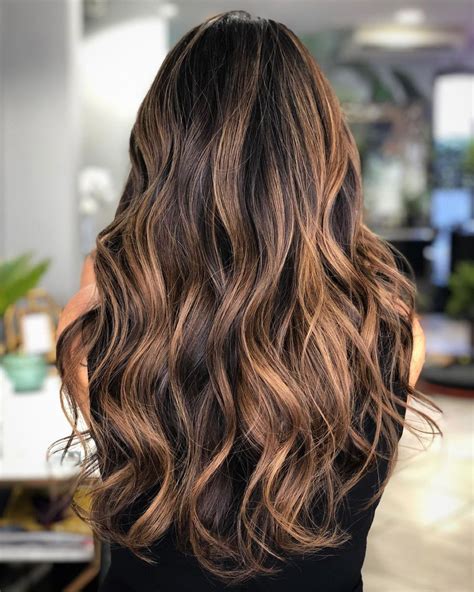Discover how to choose the right tools, understand your hair texture, section your hair properly, and avoid common mistakes with professional techniques. Ideal for perfecting your hair routine.
Choosing the Right Tools
Contents
When it comes to cutting your own hair at home, choosing the right tools is essential for achieving the best results. One of the most important tools you’ll need is a good quality pair of haircutting scissors. Using regular household scissors can result in a jagged and uneven cut, so investing in a pair of sharp, high-quality haircutting scissors is crucial.
Another important tool to have is a fine-toothed comb, which will help you to section your hair properly and ensure an even cut. Additionally, a handheld mirror and a large mirror will be necessary for viewing and assessing your haircut from all angles. These tools will allow you to see the back of your head and make any necessary adjustments.
A good quality spray bottle is also essential for keeping your hair damp while cutting, as this will make it easier to achieve an even and precise cut. Finally, having a pair of hair clips on hand will help to keep your hair organized and out of the way while you work on different sections.
Overall, choosing the right tools is key to achieving a professional-looking haircut at home. By investing in high-quality scissors, combs, mirrors, and spray bottles, you’ll be better equipped to achieve the results you desire.
Understanding Your Hair Texture
Understanding your hair texture is essential when it comes to cutting your own hair. Different hair textures require different cutting techniques and styles in order to achieve the desired look. It’s important to know whether your hair is straight, wavy, curly, or coily, as this will determine how the hair will fall and how it will react to certain cutting methods.
One way to determine your hair texture is to simply observe how your hair dries naturally after washing. If it dries straight, you likely have straight hair. If it forms loose waves or curls, you have wavy or curly hair, respectively. Another method is the texture test, where you run your fingers through a strand of hair to feel the shape of the strand. Straight hair will feel smooth, while wavy and curly hair will have a more textured or rough feel.
Once you have determined your hair texture, it’s important to research the best cutting techniques for your specific hair type. Straight hair, for example, may benefit from blunt cuts to create a sleek look, while curly hair may require more layering to enhance the natural texture and volume. Understanding how your hair texture influences the way it should be cut will help you achieve professional-looking results from the comfort of your own home.
It’s also important to consider the maintenance and styling of your hair texture when choosing a cut. Straight hair may require less styling and maintenance, while curly and coily hair may need more frequent trims and specific products to keep the shape and prevent frizz. By understanding your hair texture, you can make informed decisions about the best way to cut and care for your hair.
Sectioning Your Hair Properly
When it comes to cutting your own hair at home, sectioning your hair properly is crucial for achieving a professional-looking result. By dividing your hair into clean, even sections, you can ensure a more precise and consistent haircut. To begin, start by combing your hair thoroughly to remove any tangles or knots. Then, using a rat-tail comb, create a clean part down the center of your head, dividing your hair into two equal sections.
Next, take one section of hair and use hair clips to secure the rest of your hair out of the way. This will prevent any stray hairs from getting in the way while you are cutting, and will also make it easier to focus on one section at a time. With the section of hair you are working with, use the rat-tail comb to create subsections that are around 1-2 inches wide, depending on the thickness of your hair. Again, use hair clips to secure the subsections to keep them separated and organized.
By sectioning your hair in this methodical manner, you can ensure that each part of your hair receives the same amount of attention and trimming. This will result in a more balanced and symmetrical haircut, and will make it easier to follow along with video tutorials and expert tips. Remember to take your time with each section, and don’t rush through the process. Proper sectioning is essential for achieving a professional-looking haircut at home.
Following Professional Techniques
When it comes to cutting your own hair, it’s essential to follow professional techniques in order to achieve the best results. One of the most important aspects of following professional techniques is to ensure that you have the right tools for the job. This includes high-quality scissors, a fine-toothed comb, and clips to keep your hair in place while you work.
Understanding your hair texture is also crucial when following professional techniques. Different hair textures require different cutting methods, so it’s important to be aware of the specific needs of your hair in order to achieve the best outcome. Whether you have straight, curly, or wavy hair, there are professional techniques that can help you achieve a salon-worthy haircut at home.
Sectioning your hair properly is another key aspect of following professional techniques when cutting your own hair. This involves dividing your hair into small, manageable sections in order to ensure an even and precise cut. This technique is commonly used by professional hairstylists and can make a big difference in the outcome of your haircut.
Following video tutorials from professional hairstylists can be incredibly helpful when it comes to following professional techniques for cutting your own hair. There are countless online resources that offer step-by-step guides and demonstrations of professional cutting techniques that you can easily follow from the comfort of your own home.
By following professional techniques and tips from experts in the industry, you can avoid common mistakes that are often made when cutting your own hair. This includes uneven layers, choppy ends, and an overall unflattering haircut. With the right knowledge and techniques, you can achieve salon-quality results without ever having to leave your home.
Avoiding Common Mistakes
When it comes to cutting your own hair, there are common mistakes that many people make, leading to less than desirable results. One of the most common mistakes to avoid is not using the right tools. Using dull scissors or the wrong type of shears can result in an uneven, choppy haircut. It’s important to invest in high-quality haircutting scissors and combs specifically designed for at-home use.
Another common mistake is not understanding your hair texture. It’s crucial to take into account the natural texture of your hair before attempting to cut it. Curly hair, for example, should be cut when dry to avoid the shrinkage effect, while straight hair can be cut when wet to achieve an even length.
Sectioning your hair properly is also essential for a successful at-home haircut. Failing to section your hair can result in an uneven and lopsided style. Utilize hair clips or ties to divide your hair into manageable sections, ensuring that each section is cut evenly.
Following professional techniques is key to avoiding common mistakes. Before attempting to cut your own hair, familiarize yourself with basic haircutting techniques through video tutorials and guides. Take your time and practice on small sections of hair to build confidence and skill.
Lastly, avoiding common mistakes involves being patient and taking your time. Rushing through a haircut can lead to careless errors that are difficult to fix. Take breaks, evaluate your progress, and don’t be afraid to seek professional help if needed.











